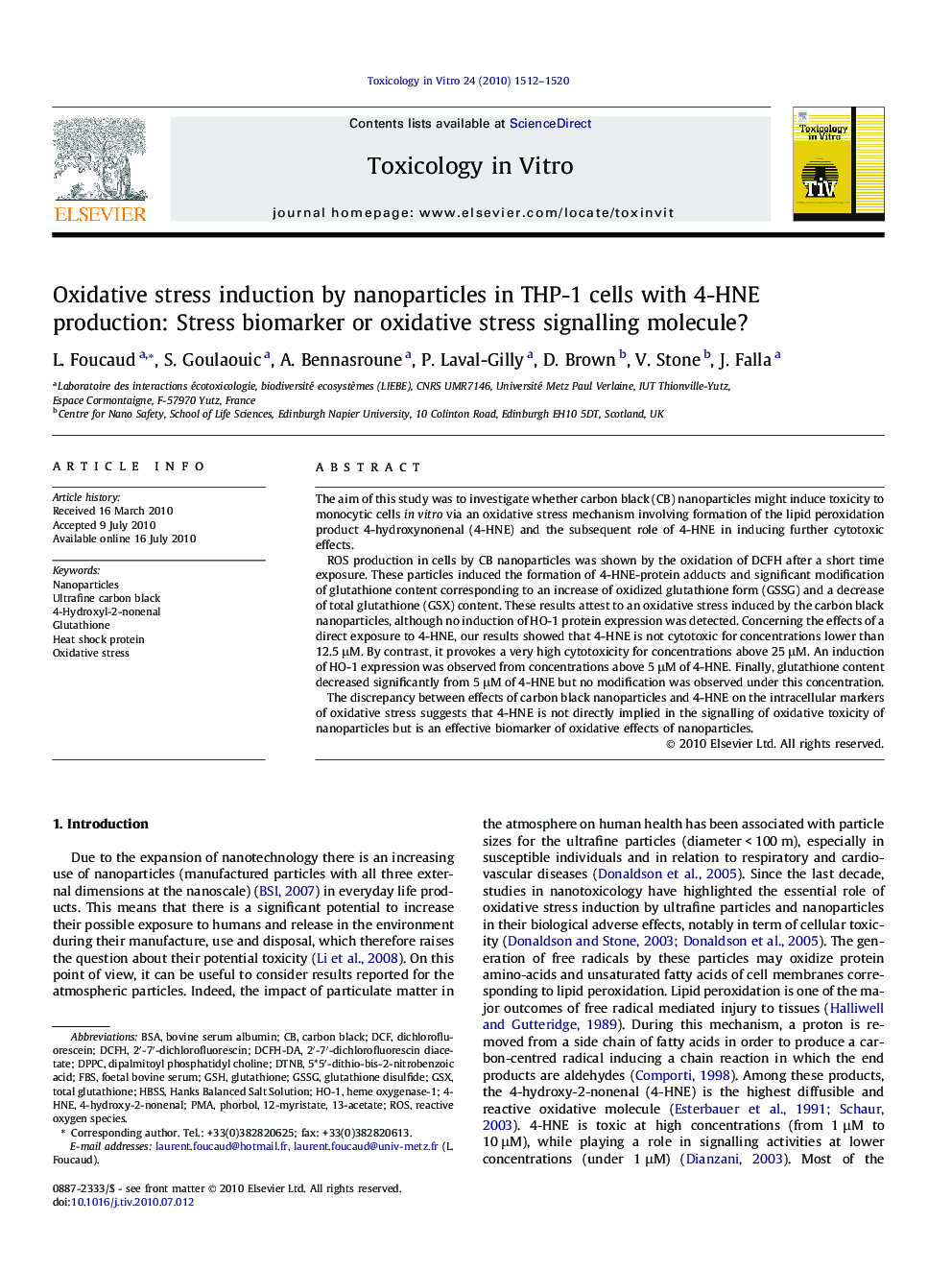| Article ID | Journal | Published Year | Pages | File Type |
|---|---|---|---|---|
| 2603192 | Toxicology in Vitro | 2010 | 9 Pages |
The aim of this study was to investigate whether carbon black (CB) nanoparticles might induce toxicity to monocytic cells in vitro via an oxidative stress mechanism involving formation of the lipid peroxidation product 4-hydroxynonenal (4-HNE) and the subsequent role of 4-HNE in inducing further cytotoxic effects.ROS production in cells by CB nanoparticles was shown by the oxidation of DCFH after a short time exposure. These particles induced the formation of 4-HNE-protein adducts and significant modification of glutathione content corresponding to an increase of oxidized glutathione form (GSSG) and a decrease of total glutathione (GSX) content. These results attest to an oxidative stress induced by the carbon black nanoparticles, although no induction of HO-1 protein expression was detected. Concerning the effects of a direct exposure to 4-HNE, our results showed that 4-HNE is not cytotoxic for concentrations lower than 12.5 μM. By contrast, it provokes a very high cytotoxicity for concentrations above 25 μM. An induction of HO-1 expression was observed from concentrations above 5 μM of 4-HNE. Finally, glutathione content decreased significantly from 5 μM of 4-HNE but no modification was observed under this concentration.The discrepancy between effects of carbon black nanoparticles and 4-HNE on the intracellular markers of oxidative stress suggests that 4-HNE is not directly implied in the signalling of oxidative toxicity of nanoparticles but is an effective biomarker of oxidative effects of nanoparticles.
